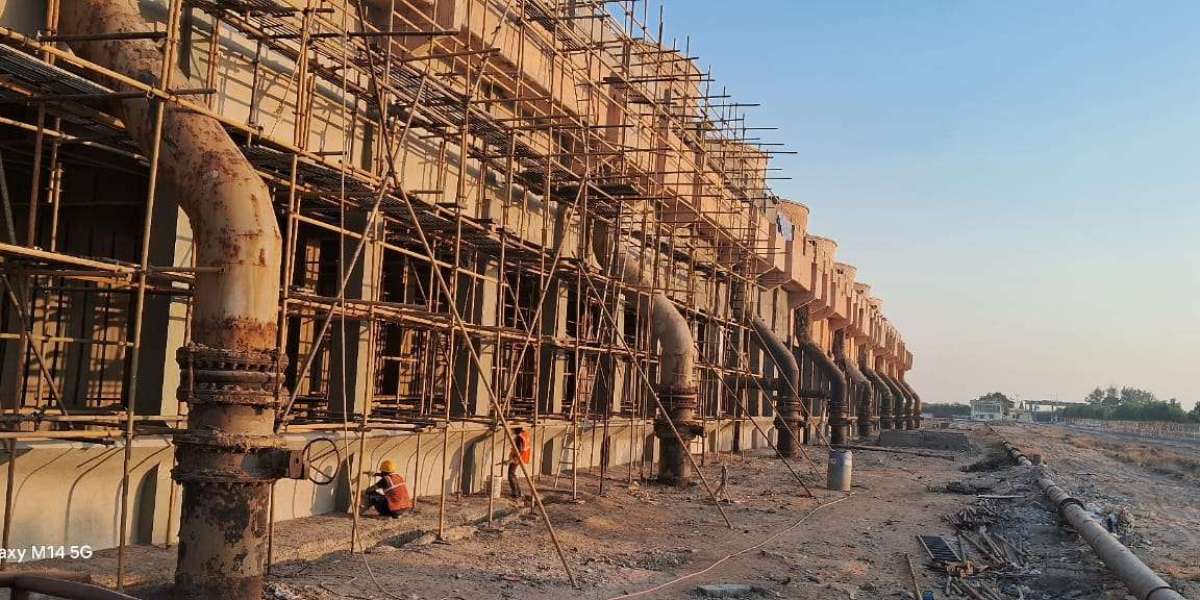India is home to a wide range of old structures. From colonial-era bungalows to decades-old apartment complexes, ageing buildings are everywhere. These structures often develop issues like cracks, dampness, corrosion, or weakening foundations. Many property owners consider demolishing and rebuilding. But in most cases, that is neither cost-effective nor necessary. Instead, one of the smartest solutions lies in the repair and rehabilitation of structures.
Extending the Lifespan of Structures
Extending the life of historic structures is one of the main justifications for choosing structural repair. Over time, weather, usage, and environmental stress cause structures to decay. These buildings can continue to function for many more years thanks to structural repair and rehabilitation. By strengthening weak areas, this technique guarantees that the structure will function better under future stress. This method is quite beneficial in India, where buildings frequently remain for decades.
Ensuring Safety for Occupants and Workers
Both inhabitants and employees may be seriously at risk from aging structures. Unexpected collapses may result from water leaks, corroded reinforcements, and cracks. For this reason, structural evaluation is essential. Structural rehabilitation and repair aid in removing these hazards. The structure is made significantly safer by repairing broken components, strengthening important areas, and caulking leaks. Safety always comes first, whether it's in a commercial building or a home community. This is considerably more necessary in densely populated Indian cities.
Improving Structural Stability and Load Bearing
Buildings become weaker with time. Particularly in places where buildings are decades old, like Delhi, Kolkata, or Mumbai. Due to corrosion, ageing materials, or previous modifications, the load-bearing capability decreases. The strength of slabs, beams, and columns is restored through structural rehabilitation and repair. They guarantee that the structure can support its intended weight once more. This is crucial for housing societies preparing for vertical extension or increased use. New expansions are supported more securely by strengthened structures.
Cost Savings Compared to Reconstruction
An antique building's reconstruction might be very costly. Demolition, obtaining planning permits, purchasing materials, labor, and a considerable amount of downtime are all involved. This is costly for cooperative housing groups or middle-class families. On the other hand, structural rehabilitation and repair offer a much more cost-effective choice. They improve the building's stability and functionality while enabling property owners to keep it. For this reason, structural rehabilitation is preferred over new building by many Indian developers.
Minimal Disruption to Daily Life
The fact that homeowners may frequently remain in their houses while structural repairs are being made is another significant benefit. People are typically relocated for extended periods during total reconstruction. That raises the cost of rent and causes stress. To minimise disruption, structural repair and rehabilitation might be organised in stages. Schools, hospitals, and commercial facilities that cannot afford lengthy shutdowns will find this very useful.
Preserving Architectural Heritage and Design
India is home to a large number of architecturally noteworthy structures, particularly in its older towns and neighbourhoods. These consist of heritage-worthy bungalows, temples, and colonial mansions. They can lose their cultural identity if they are rebuilt. Structural rehabilitation and repair provide a solution that increases strength while maintaining the original appearance. In Indian urban planning, heritage conservation is becoming more and more popular, and structural restoration is essential to this movement.
Enhancing Property Value and Market Appeal
Better tenants and buyers are drawn to well-maintained buildings. Rehabilitated buildings exhibit stability, care, and contemporary improvements. This increases the rental and resale value of ageing apartment buildings or business complexes. Repairing and renovating buildings makes them stand out in highly competitive real estate markets like Pune, Bengaluru, and Ahmedabad. Investing in secure and modern houses gives investors greater confidence.
Compliance with Building Codes and Safety Norms
Building codes have changed throughout time. In India, a large number of historic structures no longer adhere to modern safety regulations. During inspections or insurance applications, this turns into a liability. Structures are brought into compliance with current codes by repair and rehabilitation. For instance, in seismic zones, earthquake-resistant retrofitting is crucial. This lowers future dangers for occupants and helps prevent penalties.
Preparing for Vertical Extensions and Usage Changes
A lot of commercial buildings and housing societies want to modernise their infrastructure, add floors, or alter their layouts. However, new loads are frequently too much for older structures. This is resolved by reinforcing load-bearing elements and foundations through structural repair and restoration. This makes it possible to expand vertically without requiring complete reconstruction. This benefit is revolutionary in India's urban areas, where space is at a premium.
Adapting to Modern Functional Needs
Thirty to forty-year-old buildings were not constructed with the needs of the modern world in mind. They could be devoid of amenities like sophisticated plumbing, safety systems, or elevators. These systems can be integrated into older buildings through structural repair and restoration. Property owners can improve the usability and livability of places without completely demolishing them. This enables improved working conditions and more efficient operations for offices and organisations.
Reducing Long-Term Maintenance Costs
Minor problems become expensive damages if a building is neglected. Before issues develop, timely structural repair aids in addressing the underlying causes. Structure restoration and repair lower ongoing maintenance expenses. For cooperative societies with limited resources, this is advantageous. Long-term savings are ensured by addressing problems like leaks, corrosion, or cracks early on. Emergency repairs are always more expensive than preventive measures.
Increasing Resilience Against Natural Disasters
India frequently experiences earthquakes, floods, and severe weather. Older structures frequently lack the durability required to endure such circumstances. By strengthening important sections, structural repair and rehabilitation increase resistance. Buildings are prepared for disasters by structural bracing, anti-corrosion treatments, and waterproofing. For coastal towns and areas with heavy rainfall or seismic activity, this is essential.
Action is needed for India's ageing buildings. A workable, economical, and sustainable solution is offered by structural repair and rehabilitation. The advantages are numerous and range from increasing safety and value to satisfying contemporary demands. Property owners have the option to improve and reinforce what currently exists rather than beginning from scratch. The preservation of communities, culture, and people is more important than maintaining structures.


